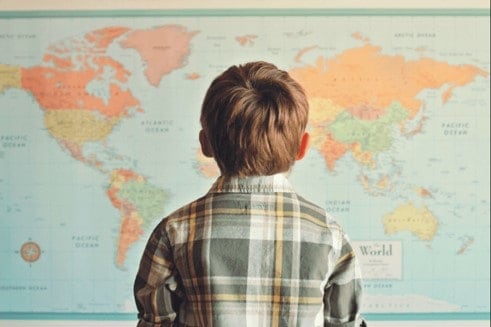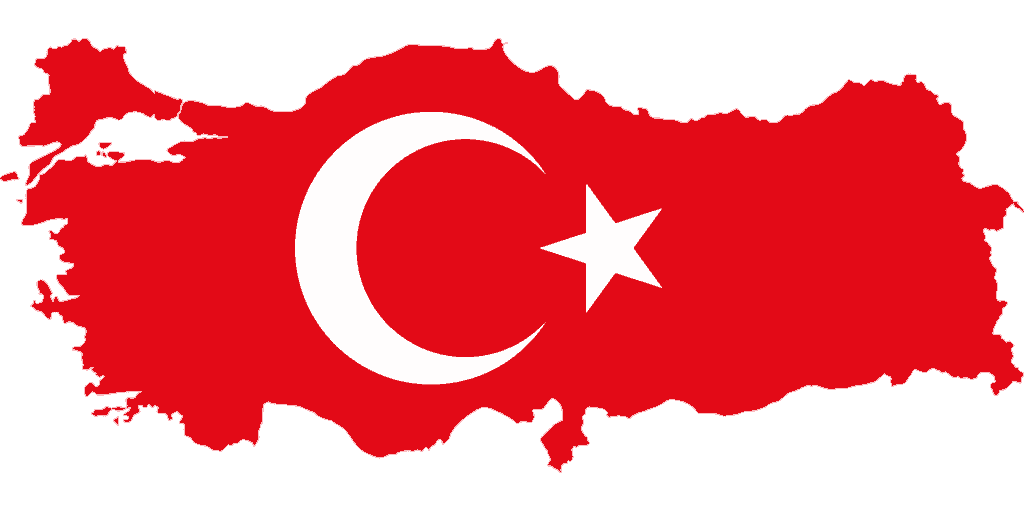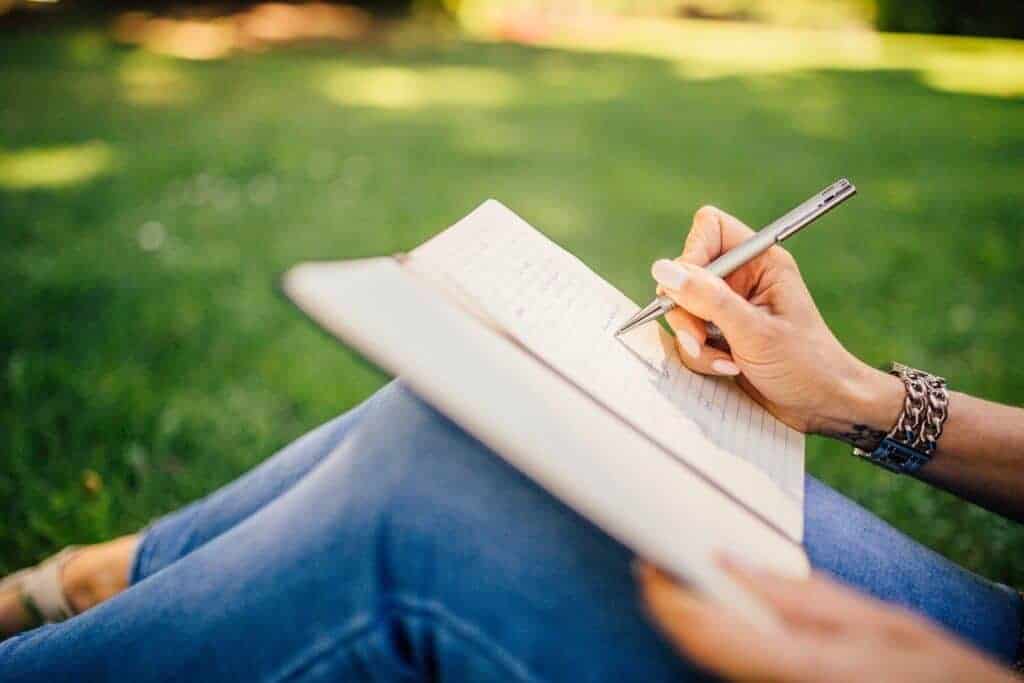
Introduction
This blog series seeks to explore how Physical Education is designed and practiced in countries around the world. The intention is to give insight and hopefully inspiration to help improve it for all young people, both now and for the future. This edition explores #PhysEd in Turkey.
If you have insight from a country we have not yet covered, then we would love to hear from you, please get in touch.
UNESCO published its ‘Quality Physical Education’ (QPE) guidelines for policymakers back in 2017. It includes a great video clip and infographic identifying some of the wide range of benefits of QPE and the following extract reminding us that PE is not just a nice to have in education, it is a human right for all children and young people!
“Every human being has a fundamental right of access to physical education and sport, which are essential for the full development of his personality. The freedom to develop physical, intellectual and moral powers through physical education and sport must be guaranteed both within the educational system and in other aspects of social life.”
The UNESCO Charter of Physical Education and Sport (1978)
In Context Exploring #PhysEd in Turkey

Turkey, a country of geographical and geopolitical importance for the world with its cuisine, holiday resorts, historical buildings and its historical lands, is known by many people. Although Turkey is in Asia in terms of the majority of the land, it also has lands in the European continent. It is also situated in the middle of the Balkans, the Caucasus and the Middle East regions. This is the gateway of the west to the east due to its strategic location. Turkey has an area of 783,562 km² and is divided into 7 different geographical regions within itself. The country is surrounded by the Black Sea in the north, the Aegean in the west and the Mediterranean in the south, thus forming a peninsula. Istanbul, which is one of the oldest settlements in the world and has been home to many civilizations for centuries, acts as a bridge connecting the Asian and European continents. According to the 2021 data of the Turkish statistics agency (TUIK), the population of the country is nearly 84 million.
The Turkish education system is divided into three levels as a 12-year compulsory education. The first level is a four-year primary school (1st, 2nd, 3rd, and 4th grades), the second level is a four-year secondary school (5th, 6th, 7th, and 8th grade), and the third level is a four-year high school (9-12th grades). According to 2020 data, a total of 18.2 million students (8.8 million girls), receive education at pre-school education, primary and secondary education level in Turkey. Of these students, 15.2 million are in public schools, 1.5 million are in private schools and 1.5 million are studying in distance learning institutions.
In formal education, there are a total of 68,589 schools, of which 54,715 are public schools, 13,870 private schools and 4 distance learning institutions. Of these schools, 11,485 are in pre-school education, 24,790 in primary school, 19,268 in secondary school and 13,046 in secondary education. The total number of teachers working in all these schools was 1.1 million for the 2019-2020 academic year.
In Policy
With the changing time, developing technology and different educational approaches, the education curriculums of the countries are renewed over time. In Turkey, the Physical Education Curriculum has been renewed three times in the last 10 years. The Turkish Ministry of National Education (MoNE) is the governing body that determines the physical education offerings in schools. It is essential to comply with and apply the curriculum prepared by this institution in each school of the country. For each education level (primary, secondary, high school), three separate curricula which complement each other have been created by the Ministry of Education. The purpose of the Physical Education Curriculum is to:
- develop student movement skills,
- develop active and healthy life skills, as well as
- develop concepts and strategies that they will use throughout their active lives.
In addition, as with all content areas, physical education is charged with helping students learn their self-management skills, social skills and thinking skills.
Currently, physical education programs include the compulsory ‘Physical Education and Game’ course in elementary schools. The aim of ‘Physical Education and Game’ course in elementary school is to prepare students for the next level of education by developing basic movements, active and healthy living skills, concepts and strategies and related life skills that they will use throughout their lives through play and physical activities.
This course is offered five hours per week in grades 1-3 and two hours in the 4th grade and it is conducted by the classroom teachers. The compulsory ‘Physical Education and Sport’ course in middle schools is two hours per week in 5th to 8th grades and is the continuation of the ‘Physical Education and Game’ course in elementary schools. Most importantly, these courses during these years of education are taught by appointed physical education teachers. The aims of physical education lessons in these classes are to develop sports preparation game practices between the 5th and 7th grades, and then to develop movement skills specific to various sports (e.g. football, volleyball, basketball, etc.) in the 8th grade. In addition to this course, there is a 2-hour elective course under the name of ‘Sports and Physical Activities’ in the middle school. Within this course, students receive intensive training for a semester on specific sport decided by the teacher. In this course it is also suggested to use the Sport Education Model to teach the different sport branches to students. For many high schools (grades 9 and 12), Physical Education and Sport is 2 hours per week and is compulsory in some schools and elective for others. According to the new secondary education system announced by MoNE, the number of compulsory courses will gradually decrease and the courses will mostly be in elective status effective for 2020-2021 education period. One of the courses to be elective is physical education. While this is a step backwards for the field, potentially it frees programs up to provide more student friendly offerings. Below you can see the physical education and games class curriculum for grades 1-2-3-4, and physical education and sports class curriculum for grades 5-6-7-8 respectively (in Turkish):
In Practice
Physical education lessons in Turkey appear fragmented, including both positive and negative components. The translation from policy to practice in contemporary schools can be challenging. Turkey can be given as an example of this situation. A major issue facing physical education in Turkey is financial insufficiencies. As an example of this situation, we can cite the low number of gymnasiums in schools and the lack of equipment. Currently, more than 80% of schools conduct their physical education classes in open environments such as the school garden (or parking lot). This can prove challenging when seeking to teach physical education lessons when the weather conditions are unsuitable. In some studies, it has been observed that teachers also express concern about the insufficient equipment in their schools. While there is a central curriculum that every school is obligated to implement, the physical conditions of every school are not equal. It appears that facilities and equipment are the primary barriers in Turkey.
Despite these barriers, significant developments have taken place in the fields of education and sports in Turkey in recent years. While 11 billion ₺ (Turkish Lira) was allocated for education in 2003 (9% of the general budget), this figure was increased to 122 billion ₺ (19% of the general budget) in 2017. However, efforts advocating for quality physical education are still needed. There are many teachers who make great efforts to provide quality physical education in their schools and work to garner resources for their schools with donations and grants. Therefore, as mentioned earlier, while a curriculum has been established the implementation of the curriculum is a work in progress, as is the case in most countries.
One potential area of growth for Turkey that would improve the quality of curriculum implementation is the provision of professional development. For example, a teacher who has spent his 20th year in the profession in contrast to teachers who recently graduated from university adopt different education styles and offer students different styles of physical education at the same time. Without up-to-date training, it is not possible to provide contemporary physical education across the country. In addition, an accountability system for teachers to strive to provide quality physical education experiences could assist in the move towards effective instruction.
Even with these issues, education (and physical education more specifically) in Turkey is poised to leverage resources to promote physical activity for all citizens of the future. There are many transformative ideas and inspirational teachers to make it more possible. For example, the teacher preparation system in the Turkish universities can modify its training. In Turkey, the course curriculums of the universities are determined by the ‘Higher Education Committee (YÖK)’ which is the central authority. However, while the university curriculum is determined by this institution, the primary-middle-high school’s curriculum, objectives, outcomes, and projects in the schools are determined by the Ministry of National Education (MoNE). Therefore, cooperation between these two institutions should be maximised for quality educators and quality education curriculums. Further, these institutions could collaborate to provide ongoing professional development for teachers in and around the university. Another strategy that can help strengthen physical education around the country would be a whole school approach to physical activity promotion throughout Turkey. In this approach, physical educators would serve as the leader of the efforts to create a culture of physical activity nationwide. The importance of creating projects aiming quality physical education has been integrated into systems worldwide. Universities and academicians are often key collaborators and pioneers who should develop strategies the science and new approaches. Therefore, the relationships and cooperation between academicians and physical education teachers at schools should be maximised, following more up-to-date data and projects.
While the courses taught on campus serve as the foundation for future teachers, their experiences in the schools are of equal importance. Future teachers must be in schools to begin to understand the complexities and uniqueness of the school setting. These experiences also allow them to apply content learned on campus, in a real-world setting, with real students. In the universities, current Physical Education Teacher Education (PETE) curriculum offers 2 semesters field experience classes in the 4th year of undergraduate education. Students appoint on specific schools and in-service PE teachers for observation for the first semester and teaching practice for the second semester. This practice, which seems good on paper, has problems. For example, students assigned to schools in large groups find it difficult to establish the desired close relationship with physical education teachers. In addition, students who are in the last year of their education cannot provide the necessary benefit due to future anxiety, KPSS (the exam that students need to get a certain point to be able to be appointed as a teacher in public schools) exam preparation, and lack of school experience.
Physical education teachers are responsible for applying the topics, concepts, and objectives that will be covered on a weekly basis according to the central curriculum communicated to them by MoNE at the beginning of the semester. For example, if the achievements of that week are related to basketball, it is the physical education teacher’s responsibility to plan and implement the lesson planning and various activities specific to this sport. The sports and goals that the teachers will follow during the semester and the gains to be obtained after the teaching of these sports are specified in the curriculum objectives. However, teachers have the right to modify the models and activities they will implement according to the equipment they have. For this reason, although the same physical education subject is covered in the same week in each school of the country, it may differ in form and application dimensions.
Real life stories from the field

Burçin Sıdıka Demirel- Public Elementary School Classroom Teacher
I have been working as a classroom teacher in a village school in Şanlıurfa, Turkey, for 7 years. Our school does not have a gym, locker room or a special area reserved for physical education in its garden. Although this is seen as a disadvantage for us and our students, we have succeeded in reversing this situation in terms of teacher creativity. The first concrete evidence of my seeing it as a success is the fact that our class size is almost full on the days of physical education classes and observing that our students are eagerly waiting for the physical education lessons in the morning.
We observed that our students’ participation in the school increased when we did the activities by choosing active games that would create team spirit, excite the students, and by placing small prizes. We designed games with small costs, giving importance to recycling. We have also prepared an activity box where students can freely choose the games they want on certain days of the week with some of the other teachers, who I agree with about the adequacy of the physical education course in the curriculum. Thus, they were able to create and maintain their own games without a teacher. In this sense, although we do not have the infrastructure to meet the curriculum requirements, I can say that we had a good physical education experience with the determination of the teachers and students.
Kadriye Demirci- Public Secondary School Physical Education Teacher
First of all, I would like to state that this profession is my childhood dream, and I am aware of how important it is to be doing a job you dream of in Turkey, and I feel lucky in this regard. Regardless of the type of school you work at, if you are a physical education teacher, you will definitely have an advantage over other classes. I say this purely based on the energy and feedback we received from the students. In addition to the fact that my course is loved because its name and contents, my biggest motivation as a teacher is to encourage students to all kinds of activities and entertainment in the sportive sense and to observe their progress.
There is also the other side of the coin, these are the things that often make it difficult for us to do our job and cause us to lose our enthusiasm. The concept of equal opportunity in education cannot be applied at all. Since I was working in a school in a region with low financial income, we did not have any physical means. No gym, no area reserved for physical education, and equipment shortage. Our school has now come to a point where physical education lessons can be taught with the opportunities we have created and our efforts. We are able to meet our material needs at a minimum level with the donations of parents, school administration, charitable people, and our teacher friends. We have to adjust our annual plans completely according to the physical conditions of the school because weather conditions do not allow us to do the applications we want whenever we want. The subject of extracurricular sports activities and competitions is a separate problem. Due to financial and physical impossibilities, we are either unable to prepare or participate in most organisations. Sports that are not guaranteed to bring medals are not supported by the school administration. In short, physical education lessons are ignored, especially in schools in rural areas, and physical education teachers are left alone. I think that although the importance of physical education lesson is being understood more and more every day in most part of Turkey, it still does not receive the value and attention it deserves.
In Conclusion
In this document we addressed the general situation of physical education, the curriculum goals, and the challenges that prevent the achievement of the curriculum goals in Turkey. We have no doubt that greater development and acceleration will be achieved with the cooperation of institutions that bear responsibility on this issue, the desire of the teachers, and the curriculum determined with appropriate targets.
To build on the strong foundation Turkey has in physical education and the MoNE vision, while addressing the challenges that all education systems face, it is pivotal that a vision for preparing transformational future physical educators be considered. Specifically, a vision that establishes strong teacher education programs that are essential components of the development of active and healthy youth throughout Turkey. We believe at the core of this process will be university teacher training programs. These programs provide the way forward and offer a source of sustainability in the future.
Takeaways: #PhysEd in Turkey
- Curriculum objectives should be designed in accordance with the opportunities and facilities available.
- Efforts should be made to create equal activity and physical education opportunities for every student.
- The teacher education program should be planned in line with the curriculum objectives and adapted to today’s conditions.
- Field experiences of future teachers should be planned to be more professional and rational before they start their profession.
- In-service trainings should be expanded and, if possible, should be applied periodically at certain times of the year.
- Dialogues and relationships between institutions should be developed. Cooperation of institutions that have responsibility in sports and physical education system will make physical education go up.
If you have a different perspective to that described above or would like to contribute to a similar blog on a different country then we would love to hear from you, please get in touch.
About the authors
Gunay Sen- Author, Physical Education Teacher, and PhD student at the University of Kentucky, @16Gunaysen
Aaron Beighle- Educator, Teacher Educator, Author, and Professor at the University of Kentucky. @AaronBeighle


Responses